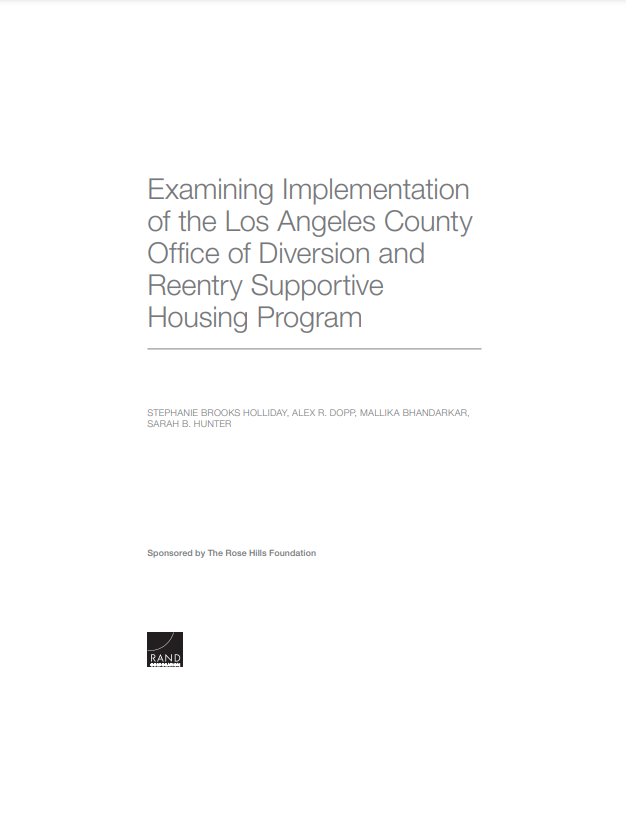Headline
Implementation insights from a permanent supportive housing (PSH) diversion program in Los Angeles for people in the criminal legal system with serious mental illness point to the value of cross-sector, cross-agency partnerships.
Context
People with behavioral health needs leaving incarceration face housing barriers in the community, such as state and federal laws that restrict access to housing for people with criminal legal system histories. PSH models, which provide long-term housing subsidies with wraparound support services, are an approach to improve outcomes for people with behavioral health needs leaving incarceration.
In 2017, the Los Angeles County Office of Diversion and Reentry implemented a PSH jail diversion program for individuals facing criminal charges in LA County jails with serious mental illness and a history of experiencing homelessness. This study provides a comprehensive overview of the program’s implementation and offers insights into key facilitators and challenges.
Findings
The authors provide detailed descriptions of the program, including the eligibility screening process, provision of field-based intensive case management services, connection to the county’s full-service partnership program, and placement into supportive housing. Interviews with program administrators, providers, and clients revealed high levels of coordination among partner organizations, the availability of higher-intensive supportive housing care, and ongoing provider training as key program facilitators. The limited availability of integrated mental health and substance use treatment services in the county was identified as an implementation challenge.
Takeaways
This resource offers valuable insight into the operationalization of an evidence-based PSH program for people with criminal legal system involvement, regardless of whether it is implemented as a diversion or reentry program. The program involved partnerships between the county jail, community-based providers, and departments of mental health, probation, and public health, highlighting the importance of partnerships in improving care for this population.

